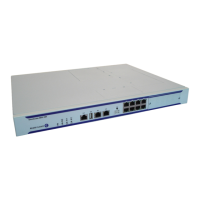Virtual Private Routed Network Services
7750 SR OS Services Guide Page 973
SDP Commands
spoke-sdp
Syntax [no] spoke-sdp sdp-id
Context config>service>vprn
Description This command binds a service to an existing Service Distribution Point (SDP).
A spoke SDP is treated like the equivalent of a traditional bridge “port” where flooded traffic received
on the spoke SDP is replicated on all other “ports” (other spoke and mesh SDPs or SAPs) and not
transmitted on the port it was received.
The SDP has an operational state which determines the operational state of the SDP within the
service. For example, if the SDP is administratively or operationally down, the SDP for the service
will be down.
The SDP must already be defined in the config>service>sdp context in order to associate an SDP
with a VPRN service. If the sdp sdp-id is not already configured, an error message is generated. If the
sdp-id does exist, a binding between that sdp-id and the service is created.
SDPs must be explicitly associated and bound to a service. If an SDP is not bound to a service, no far-
end 7750 SR devices can participate in the service.
The no form of this command removes the SDP binding from the service. The SDP configuration is
not affected; only the binding of the SDP to a service. Once removed, no packets are forwarded to the
far-end router.
Default No sdp-id is bound to a service.
Special Cases VPRN — Several SDPs can be bound to a VPRN service. Each SDP must be destined to a different
7750 SR router. If two sdp-id bindings terminate on the same 7750 SR, an error occurs and the second
SDP binding is rejected.
Parameters sdp-id — The SDP identifier. Allowed values are integers in the range of 1 and 17407 for existing
SDPs.
vc-id — The virtual circuit identifier.
Values 1 — 4294967295
spoke-sdp
Syntax spoke-sdp sdp-id:vc-id
no spoke-sdp sdp-id:vc-id
Context config>service>vprn>interface
Description This command binds a service to an existing Service Distribution Point (SDP).
A spoke SDP is treated like the equivalent of a traditional bridge “port” where flooded traffic received
on the spoke SDP is replicated on all other “ports” (other spoke and mesh SDPs or SAPs) and not
transmitted on the port it was received.

